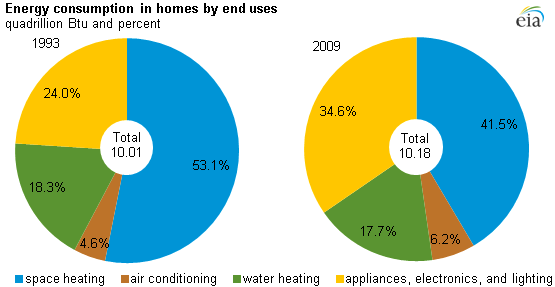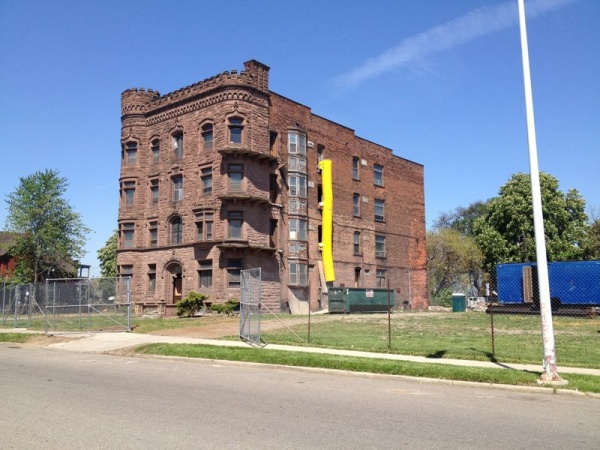El Moore Greens Near Zero Energy Design
From Green Garage Detroit
This is the work space for a design and learning community in Detroit that is developing a sustainable energy design for the El Moore building at 624 W. Alexandrine.
Contents
- 1 Near Zero Energy - Sustainable Design Schedule
- 2 Week 1 - Setting the Design Foundation
- 3 Week 2 - Field Trip
- 4 Week 3 - Building Envelope I
- 5 Week 4 - Building Envelope II
Near Zero Energy - Sustainable Design Schedule
- Week 1 - Setting the Design Foundation
- Week 2 - Field Trip
- Week 3 - Envelope I
- Week 4 - Envelope II
- Week 5 - Windows and Doors
- Week 6 - Thermal Modeling
- Week 7 - Geothermal
- Week 8 - Solar - Thermal
- Week 9 - Solar - PV
- Week 10 - Natural Ventilation
- Week 11 - Lighting & Appliances
- Week 12 - Energy Controls and Accountability
Week 1 - Setting the Design Foundation
Sustainability Goals
- Sustain an indoor environment of human health and comfort
- Winter indoor temp 69F, Summer indoor Temp 76F
- Indoor humidity: 30% - 55%
- Maximize natural ventilation
- < 20% of Standard Energy Usage of Building Similar Use
- > 33% of Energy from renewable sources
- Clear Accountability ===> Basis for continuous improvement
Sustainable Energy Strategy
Step #1 - Size/Prioritize Demand
Step #2 - Reduce Demand w/ Passive Design
- Reduce demand by passive means by 70%
- Working with natural systems
- Use Passive Haus Institute's design principles
Step #3 - Meet Demand with No/Low Carbon, Renewable Sources
- Use no/low carbon, renewable sources to meet remaining demand
- Solar Hot Water
- Solar PV
- Geothermal - Earth's energy
- Natural Ventilation
- Manage system complexity / maintainability
Step #4 - Meet Demand with High Efficiency / Low Load Sources
- Use off-peak energy. Avoid adding to building new carbon based capacity (e.g. power plants)
- Use high efficiency...no need to use extreme efficiency since demand is down...very small yields.
Step #5 - Control and Accountability
- Direct feedback loop...you use the energy...you see the usage and pay for the energy.
Understanding Energy Demands
Typical Energy Demand Profiles
Heating
- Heating Season: mid-September - mid-May (8 months)
- Peak Season: mid-December - mid-February (2 months)
- Largest total demand in year
Cooling
- Cooling Season: mid-May - mid-September (4 months)
- Peak Season: July - August (2 months)
- Humidity is as important as temperature ... drive you to psycho...charts
- Solar gain is major contributor
- Typically drive peak hour sizing of equipment
Shoulder Seasons
- Spring Season: May - mid-June (1.5 months)
- Fall Season: September - mid-October (1.5 months)
- Varies widely...unpredictable
- Creates very difficult demand patterns
Domestic Hot Water
- Uses
- Shower (gal/min*min/day*persons)
- Washer (gal/load*loads/day*persons)
- Sinks (gal/min*min/day*persons)
- Dishwasher (gal/load*loads/day*persons)
- Demand Characteristics
- Peak Load
- City Water Temps (40F Winter? / 55F Summer)
Lighting
- Interior
- Motion detection
- Number, lumens and efficiency
- Exterior
- Photocell
- Number, lumens and efficiency
Appliances
- Refrigerator
- Dryer
- Washer
- Dishwasher
Natural Elements
- Where in the world is the El Moore
- 42 degrees north latitude
- Great lakes basin...clouds...temps
- Sun
- 23 East of South ...due to Woodward
- Solar south vs. magnetic South
- Sun rise, sun sets, height changes through out the year.
- Shading of trees, other buildings
- Same amount of sun as Florida! So what, Florida is not so good!
- Wind
- Urban micro wind climates
- Use for natural ventilation
- Earth
- Temperature
- Varies with depth
- Temperature
- Water
- Flows down hill...repeat...flows down hill
- Water is heavy...
- Average rain in Michigan
El Moore Building
Existing
- Built in 1898
- 4 floors w/ basement
- 15,000sf existing
- Size
- Width:
- Length:
- Height:
- Volume:
- Structure:
- Exterior Walls: brick and Lake Superior red sandstone
- Balloon frame
- Orientation: SE
- Window/Wall Ratio:
Plans
- Additions
- Add Elevator Tower
- Rooftop Cabins (4)
Thermal Physics
- Energy moves from Hot -> to -> Cold
- Heat is transferred three ways
- Conduction (R Value)
- Convection
- Radiation
- Sensible and Latent heat
- Building Performance
- R Value => Resistance to Conduction (e.g. Insulation)
- Air Infiltration => Air Exchanges per hour
- Blower door test
- U Value = Inverse of R (i.e 1/R)...used for windows
Human Comfort and Health
Human Comfort
- Human Comfort Zone describe elements of indoor human comfort
Human Health
- Air quality
- Toxicity of materials
Thermal Bridging
- Low thermal resistant penetrations in high thermally resistant structures (e.g. walls, roofs, etc)
- Happens often with:
- Joists
- Windows
- Doors
Week 2 - Field Trip
- Visited the El Moore Building Site
Week 3 - Building Envelope I
Equation for Thermal Conduction
R values
- R Values for common Materials can be found in R Value Table on Wikipedia.
World Wide Envelope (WWE) Smackdown I
Wall / Ceiling Section
- File:4th floor attic and masonry walls.pdf
- Exercises
- Exercise #1 - Calculate R Value of Wall (w/o Stud)
- Exercise #2 - Calculate R Value of Wall (w Stud)
- Exercise #3 - Calculate R Value of Ceiling (w/o Joist)
- Exercise #4 - Calculate R Value of Ceiling (w Joist)
WUFI Thermal Simulation Model
- Simulation #1 - New Wall System
- Simulation #2 - Existing Wall System
Week 4 - Building Envelope II
Infiltration
- Infiltration is the uncontrolled, unintentional introduction of outside air into the building [1] on Wikipedia.
- Measured in CFM and/or ACH
- ACH=(CFM x 60)/building volume in cubic feet
- Wind, buoyancy and building pressure effect
- Also brings in dust, drafts, moisture, and associated energy use
- Exfiltration is when air leaves the building, intentionally or not
- Ventilation means providing fresh clean air for occupants to breathe
- If the building is very well-sealed, may need to bring in outside air by mechanical means
- Measured in CFM and/or ACH
Building pressure
- Maintaining the building interior at a slight positive pressure helps reduce infiltration
- Imagine the building as a balloon, or a lung
Air sealing the building
- Windows and doors (more next week)
- Other penetrations
- Masonry
- Rigid insulation
- CSU article on air sealing homes [2]
Ventilation
- How much outside air to bring in?
- ASHRAE 62.2 says 0.35 ACH min.
- How do you do that when you have individual dwelling units?



